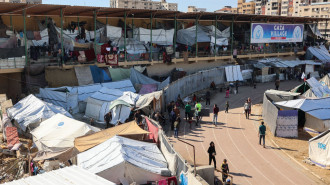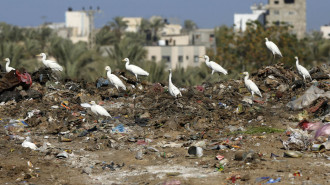Saudi Arabia will burn 'record amounts of oil' this stay-at-home coronavirus summer
Saudi Arabia will burn 'record amounts of oil' this stay-at-home coronavirus summer
Saudis are staying at home this summer, as coronavirus continues to spread.
2 min read
Most Saudis will be staying at home this summer [Getty]
Saudi Arabia is burning record amounts of oil to an electricity surge, as nationals and expatriates stay at home this summer due to the coronavirus epidemic.
Power plants are running at capacity as Saudis rely on air conditioning to survive the scorching summer at home after Covid-19 put a halt to holiday plans, Bloomberg has reported.
Saudi Arabia mostly relies on natual gas to power its energy generators for most of the year but is boosted with crude during the summer months when demand for electricity is at its highest.
The stay-at-home summer means that the kingdom will have to use more "dirty" crude to keep homes cool as record numbers of Saudis stay at home.
"They can simply import more gas or burn more crude in power generation," Carole Nakhle, chief executive officer of Crystol Energy told Bloomberg.
"The second option is more likely and easier since the region has been doing this for years and decades and there is plenty of oil around today."
The increased demand for crude comes at a critical time for Saudi Arabia, when the kingdom leads a production cut push at OPEC to help stabilise oil prices.
Saudi Arabia has hoped to use more natual resources and gas to generate energy at home, in order to boost the export of crude, which is subsidised at home.
Riyadh has curbed some cuts to oil production in anticipation for increased summer demand.
"Our consumption is going to increase," said Saudi Energy Minister Prince Abdulaziz bin Salman in June, according to Bloomberg.
"A good chunk of what we will produce in July will go to domestic consumption - crude burning or fuel oil, not refining."
Most August months, the kingdom burns 726,000 barrels of crude oil daily to generate power, according to the Joint Organisations Data Initiative, but the number is expected to surge to close to 1 million barrels a day this year.
Saudi Arabia is one of the biggest energy consumers in the world amounting to 322 gigajoules per person in 2019, four times the global average and three times higher than Europe.
Follow us on Facebook, Twitter and Instagram to stay connected
Power plants are running at capacity as Saudis rely on air conditioning to survive the scorching summer at home after Covid-19 put a halt to holiday plans, Bloomberg has reported.
Saudi Arabia mostly relies on natual gas to power its energy generators for most of the year but is boosted with crude during the summer months when demand for electricity is at its highest.
The stay-at-home summer means that the kingdom will have to use more "dirty" crude to keep homes cool as record numbers of Saudis stay at home.
"They can simply import more gas or burn more crude in power generation," Carole Nakhle, chief executive officer of Crystol Energy told Bloomberg.
|
|
"The second option is more likely and easier since the region has been doing this for years and decades and there is plenty of oil around today."
The increased demand for crude comes at a critical time for Saudi Arabia, when the kingdom leads a production cut push at OPEC to help stabilise oil prices.
Saudi Arabia has hoped to use more natual resources and gas to generate energy at home, in order to boost the export of crude, which is subsidised at home.
Riyadh has curbed some cuts to oil production in anticipation for increased summer demand.
"Our consumption is going to increase," said Saudi Energy Minister Prince Abdulaziz bin Salman in June, according to Bloomberg.
"A good chunk of what we will produce in July will go to domestic consumption - crude burning or fuel oil, not refining."
Most August months, the kingdom burns 726,000 barrels of crude oil daily to generate power, according to the Joint Organisations Data Initiative, but the number is expected to surge to close to 1 million barrels a day this year.
Saudi Arabia is one of the biggest energy consumers in the world amounting to 322 gigajoules per person in 2019, four times the global average and three times higher than Europe.
Follow us on Facebook, Twitter and Instagram to stay connected




 Follow the Middle East's top stories in English at The New Arab on Google News
Follow the Middle East's top stories in English at The New Arab on Google News


